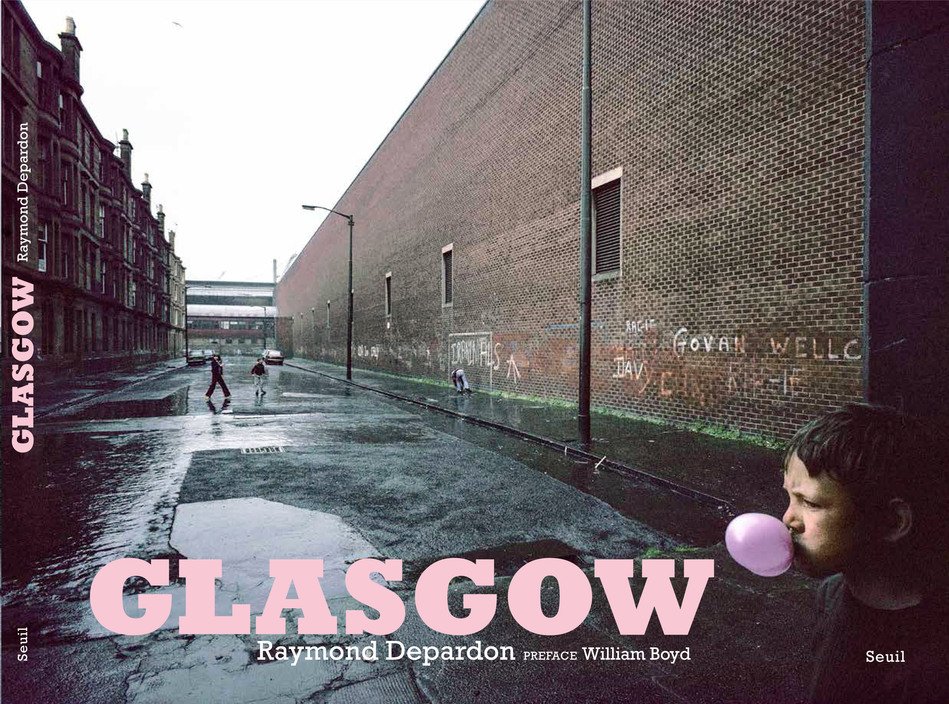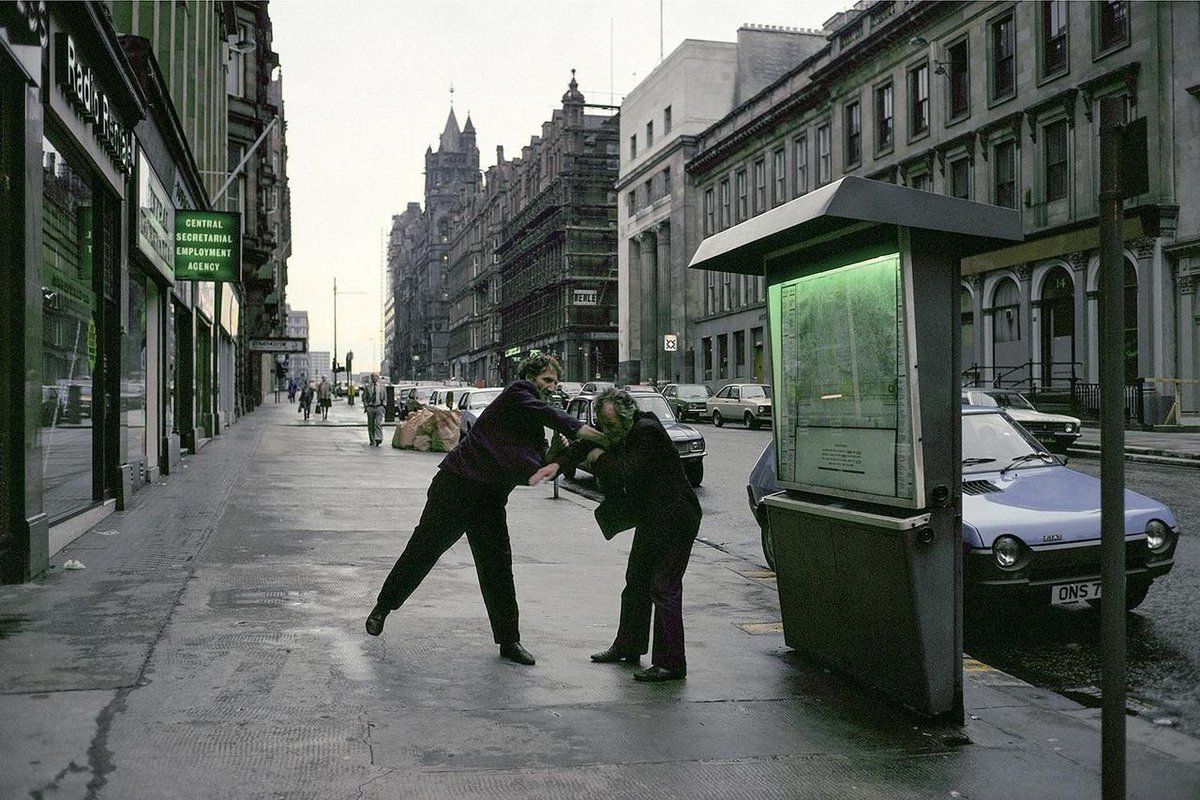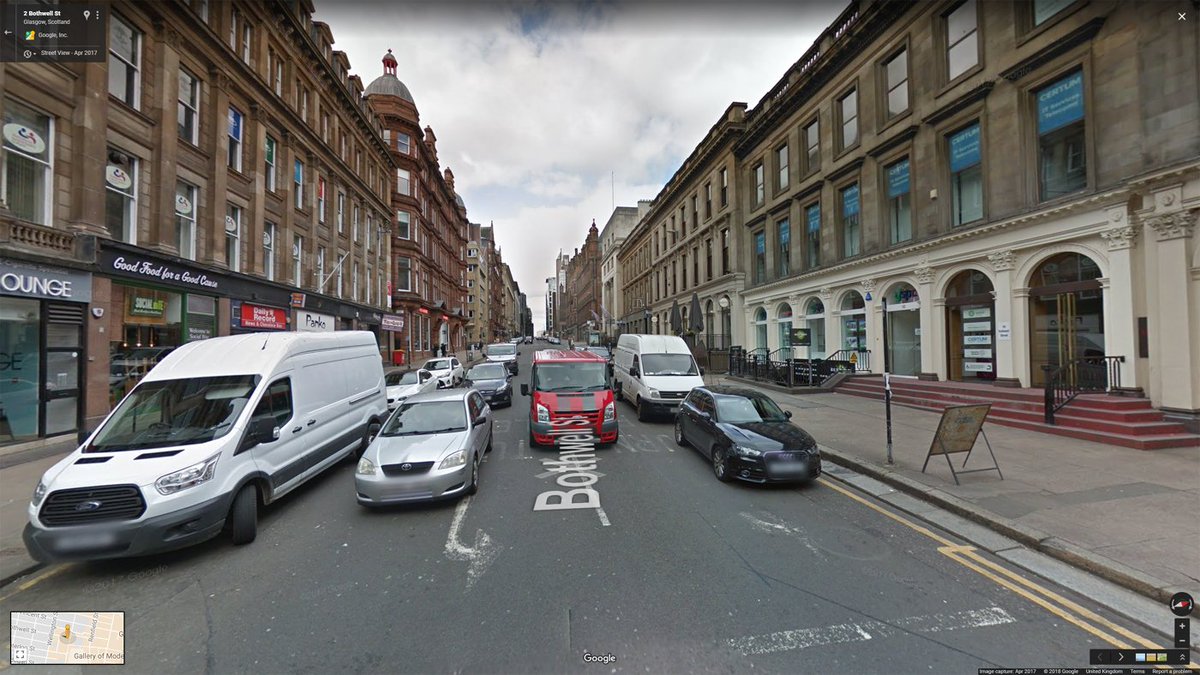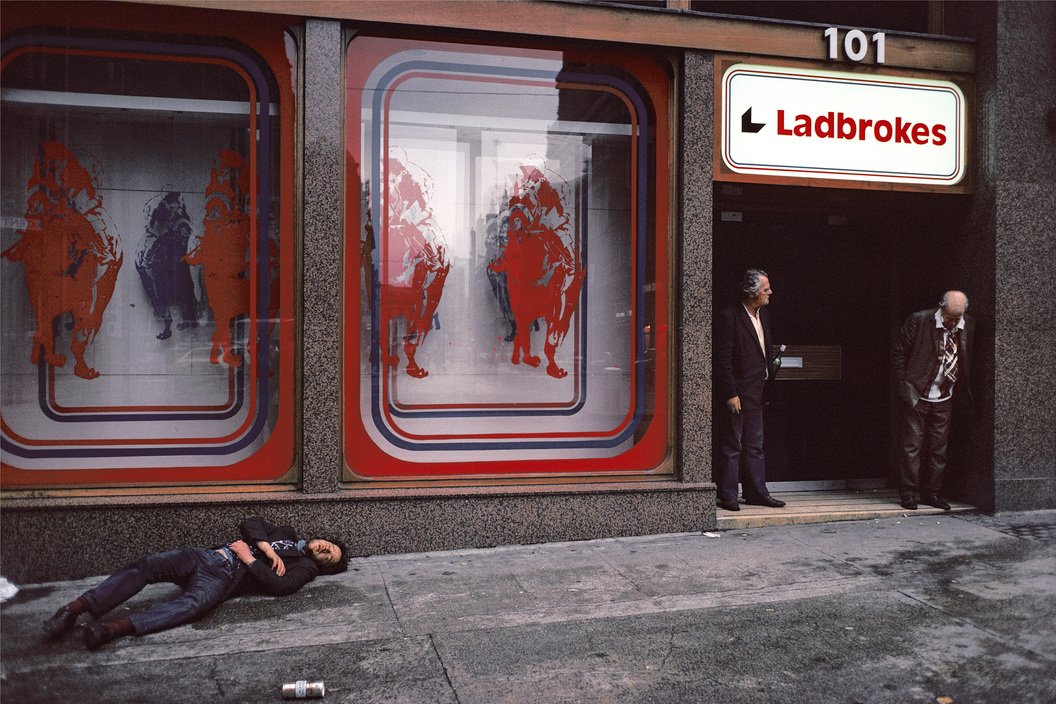A stroll along the serpentine walk on #GlasgowGreen some time between 1810 and 1820. Cattle can be seen grazing in the park while folk work and play on the beach 
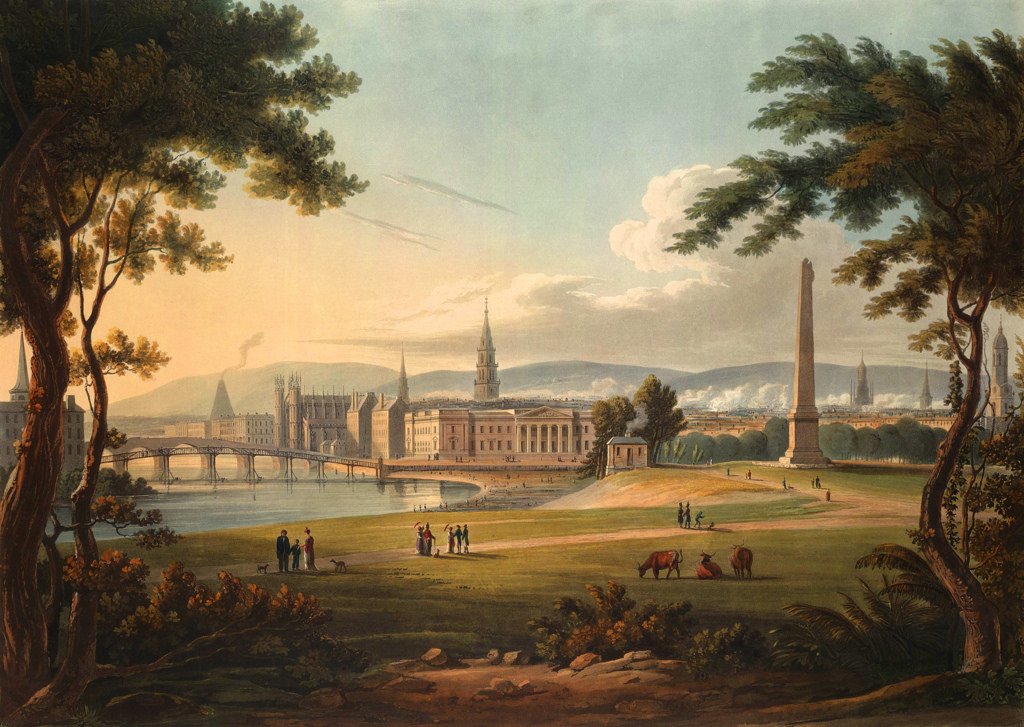
A wooden footbridge marks the spot at the foot of a recently extended Saltmarket where the current Albert Bridge stands. The original 14th century Glasgow Bridge stands behind it and would be replaced in the coming decades. 
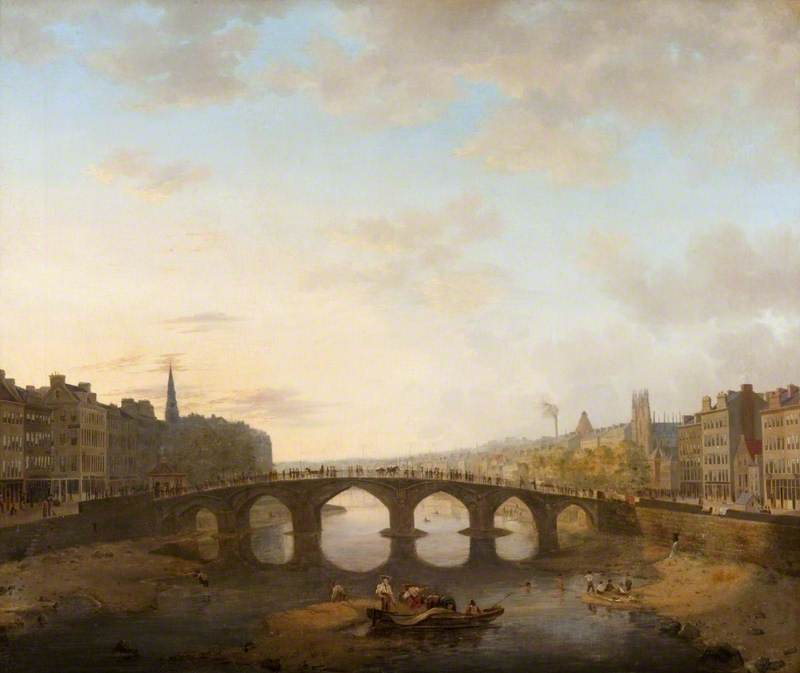
Peeking through the trees on the left is the spire of David Hamilton's recently completed Gorbals Parish Church. Its spire was 174 feet tall but lost its upper portion after being struck by lightning in 1929. 

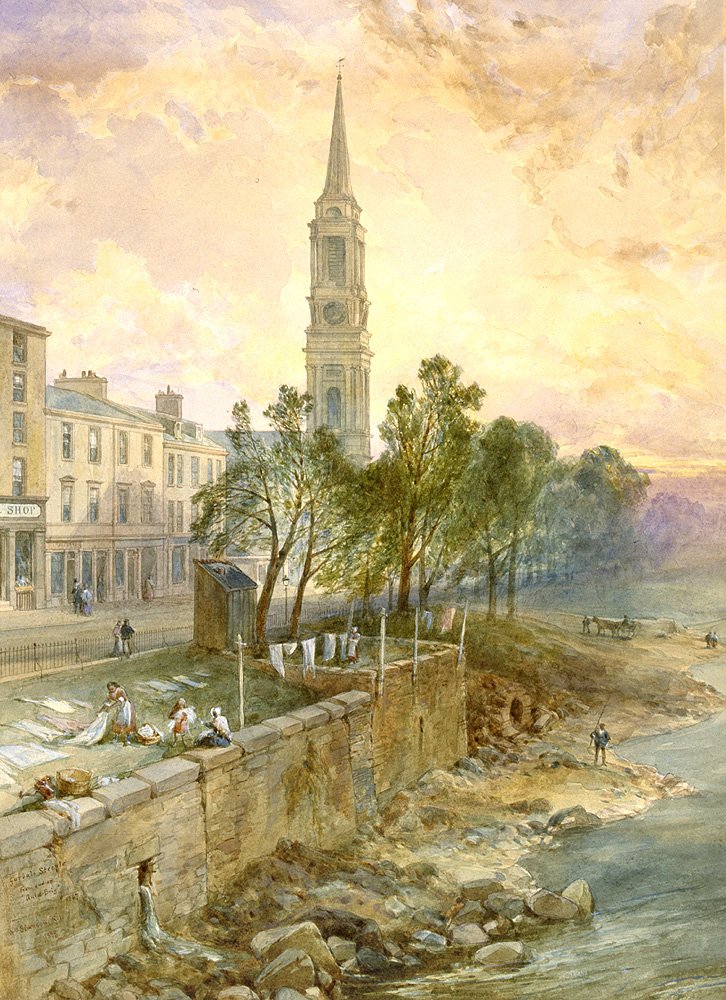
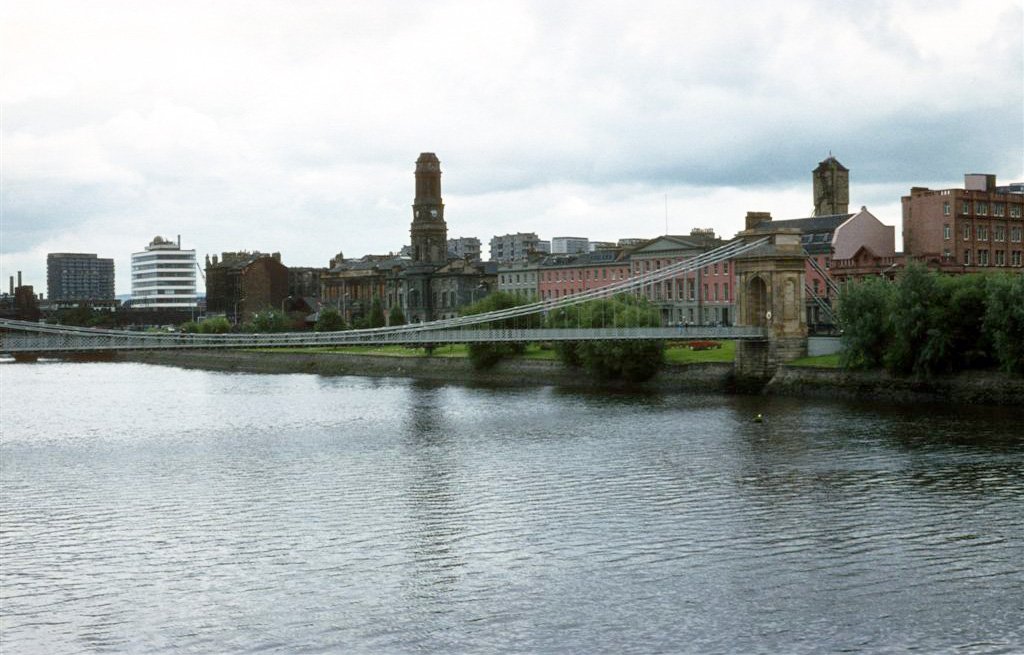
The giant obelisk of Nelson's Monument, also designed by David Hamilton, was struck by lightning in 1810 damaging its top 20 feet.
Not a fan of lightning rods.
Not a fan of lightning rods.
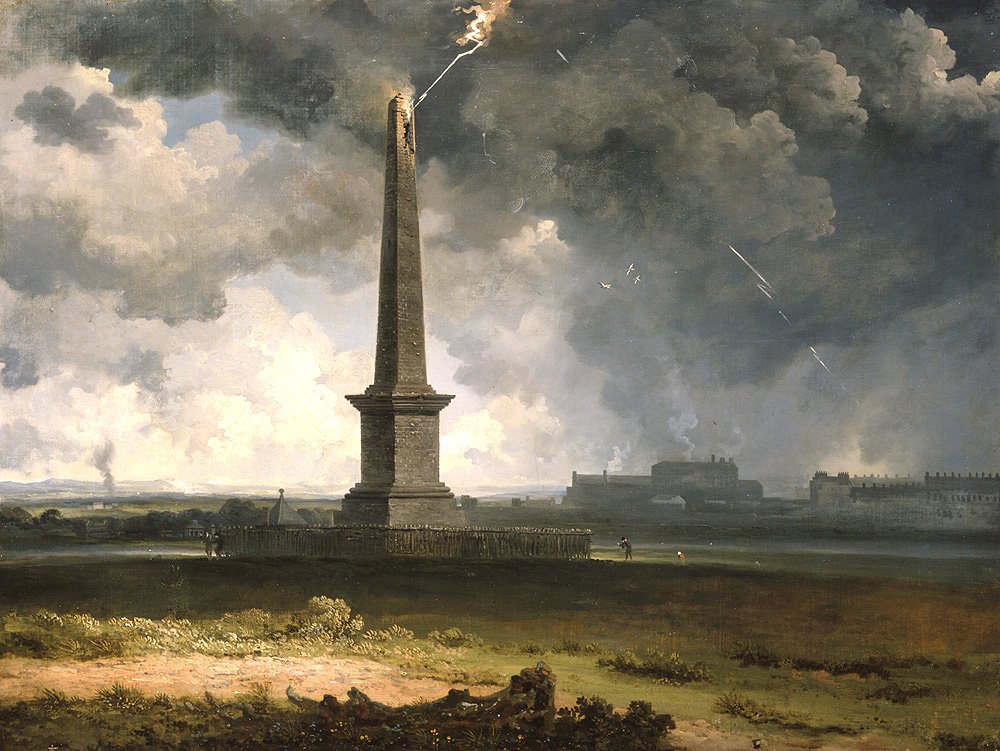
William Stark's Justiciary Courts and Municipal Offices were completed in 1814 and were built to take over the function of the Tolbooth at Glasgow Cross. The building still serves as the High Court but its municipal functions have been served by the City Chambers since 1888 
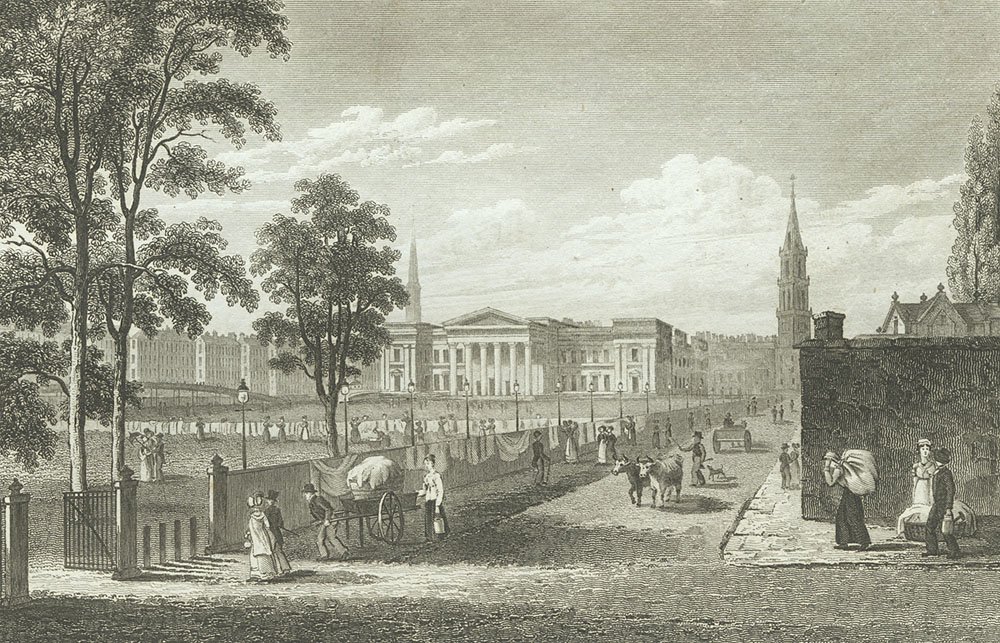
Behind the High Court is the steeple of the Merchants' House. As Glasgow's centre of gravity shifted from the Cross so too did its institutions, the Merhchants' House would move to a new home on Hutcheson St (facing the Trades House) in 1843 before settling in George Sq in 1877 



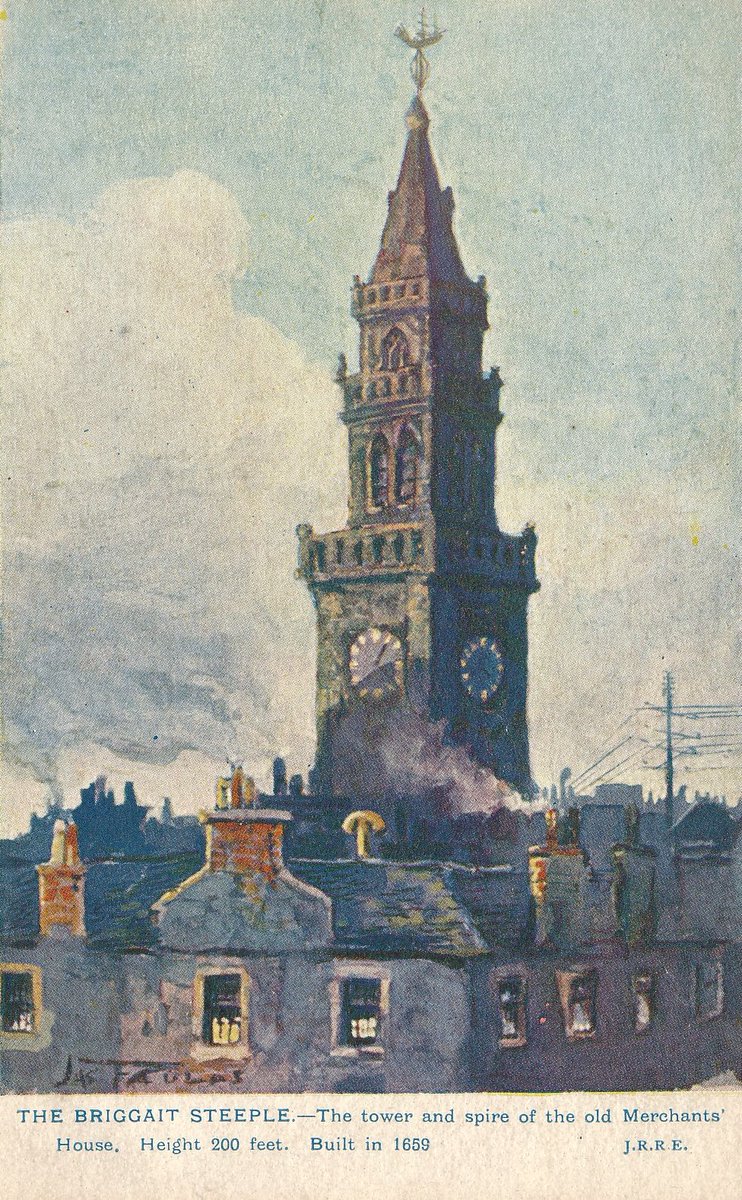
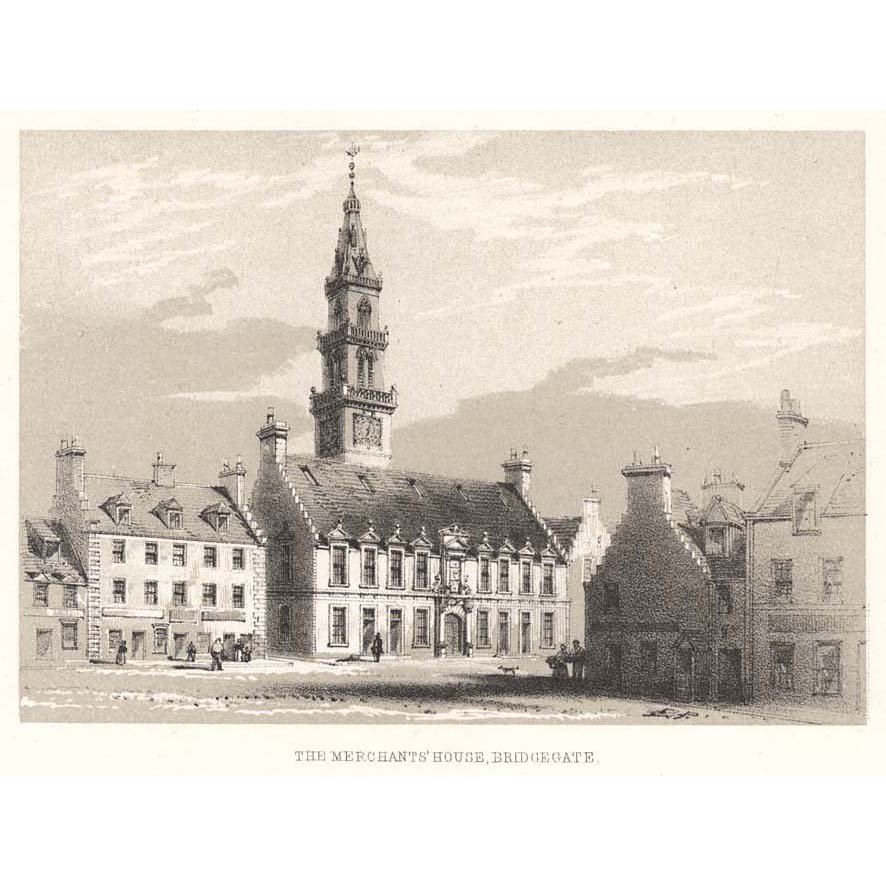
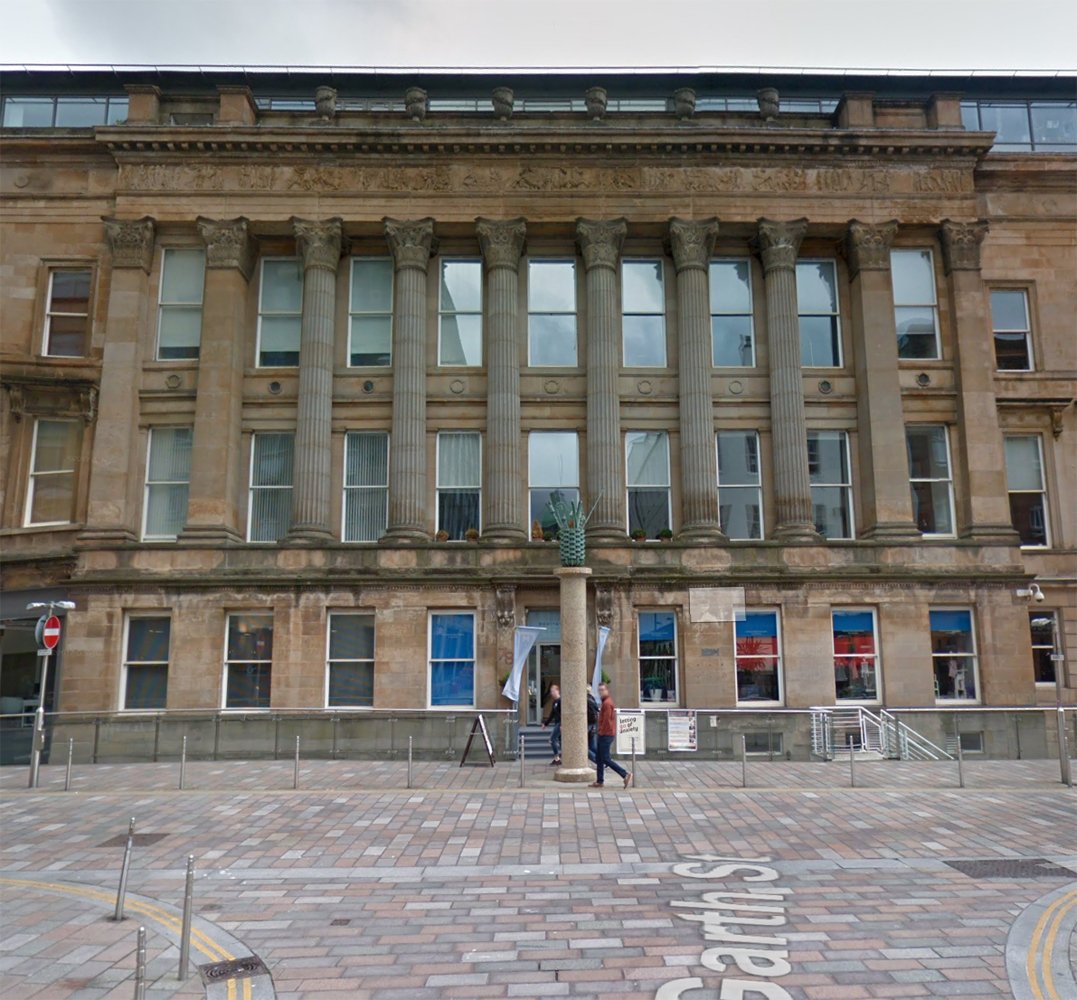

Left of the Merchants’ Steeple is the spire of James Patterson’s 1780 St Enoch Church. The church was rebuilt in 1827 but the original spire was retained. The church was entirely removed in 1925 to ease the flow of traffic in trying to access the St Enoch railway station... 



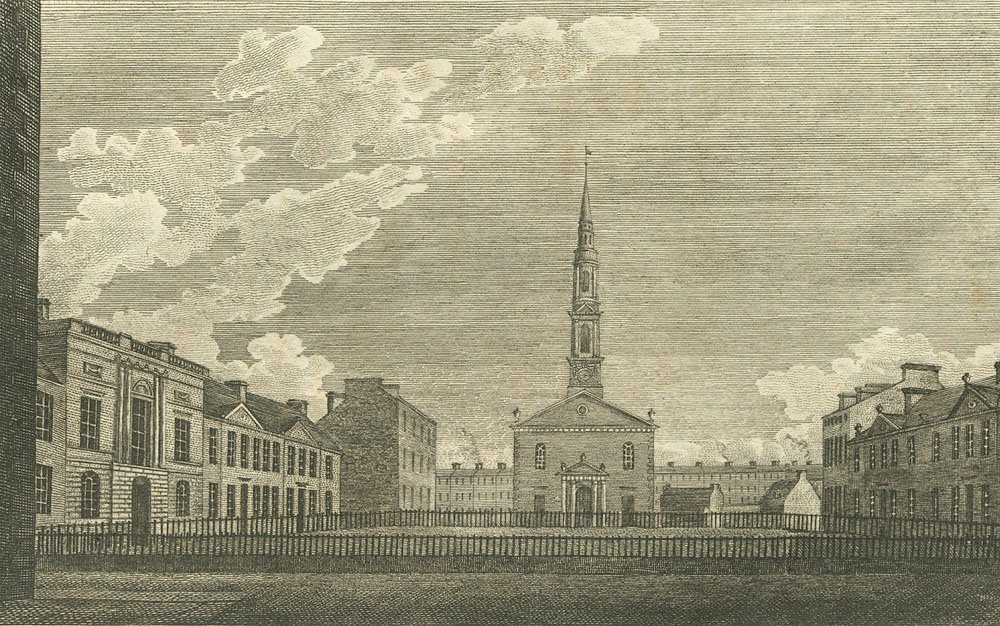
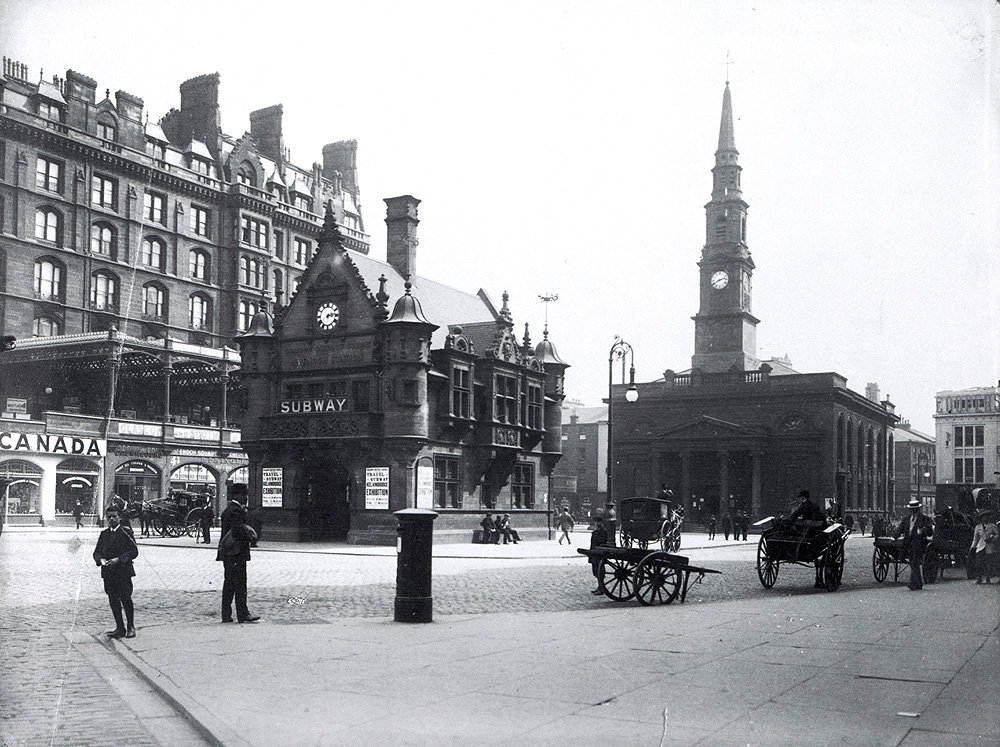

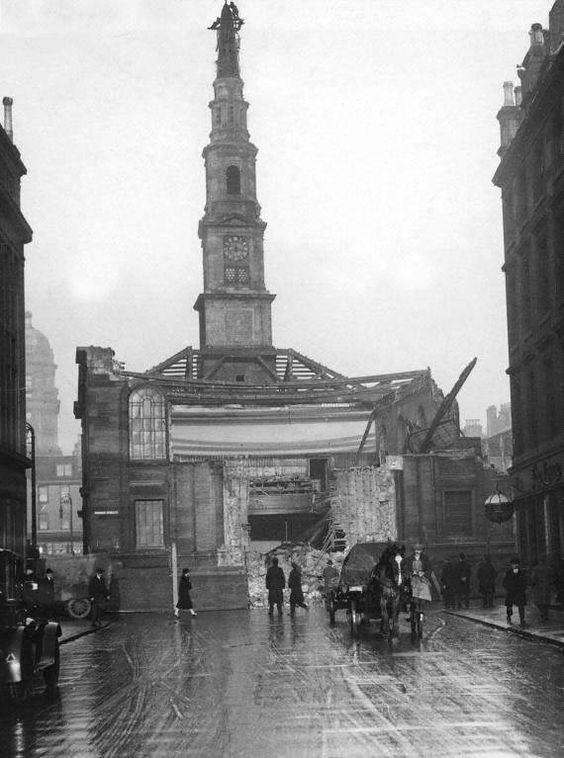
Fronting the Clyde is James Gillespie Grahams 1816 St Andrew's RC Chapel, the first Catholic church to be built in the city since the reformation. The chapel was elevated to Cathedral status in 1884, it has no spire as Catholic prominence was restricted until emancipation in 1829 
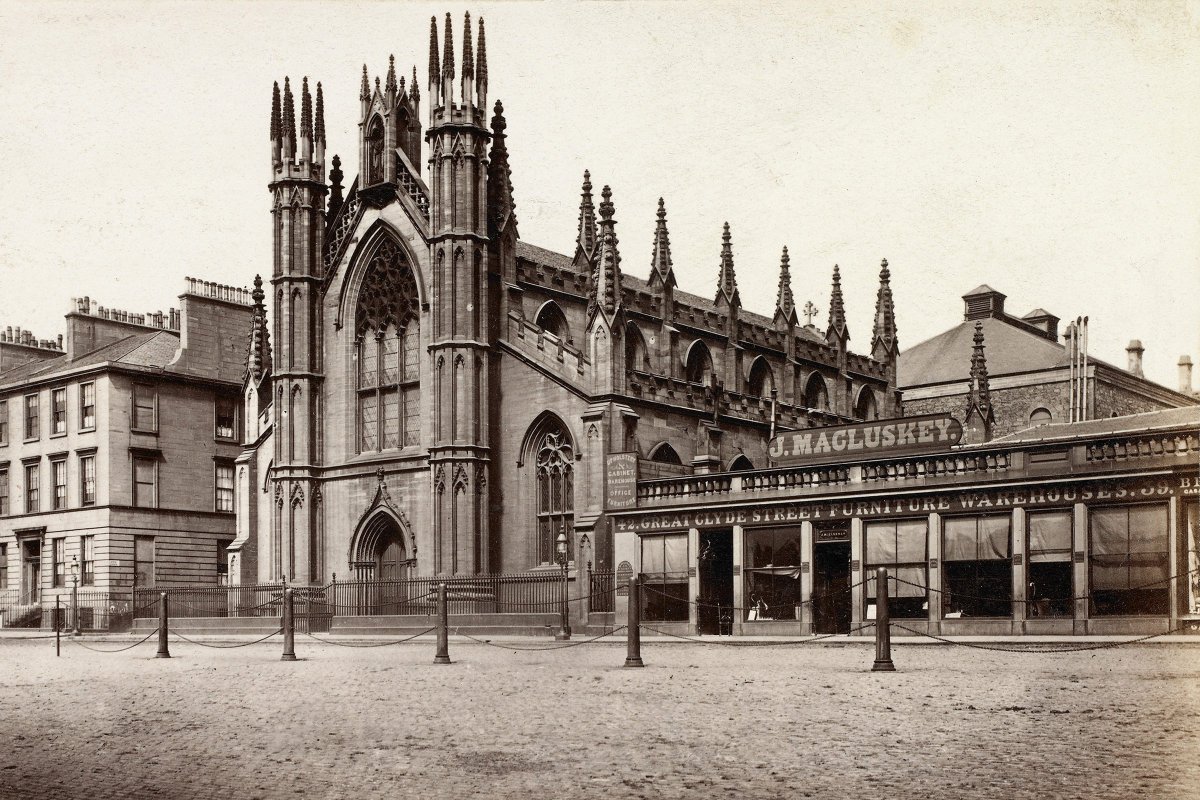
To the left of Saint Andrew’s Chapel is the large bottle kiln of the Jamaica St Glassworks. It operated for 100 years from the block bounded by Jamaica, Dixon, Howard and Clyde Streets until it was replaced by the new Custom House in 1840. Engraving from 1768, map 1778 

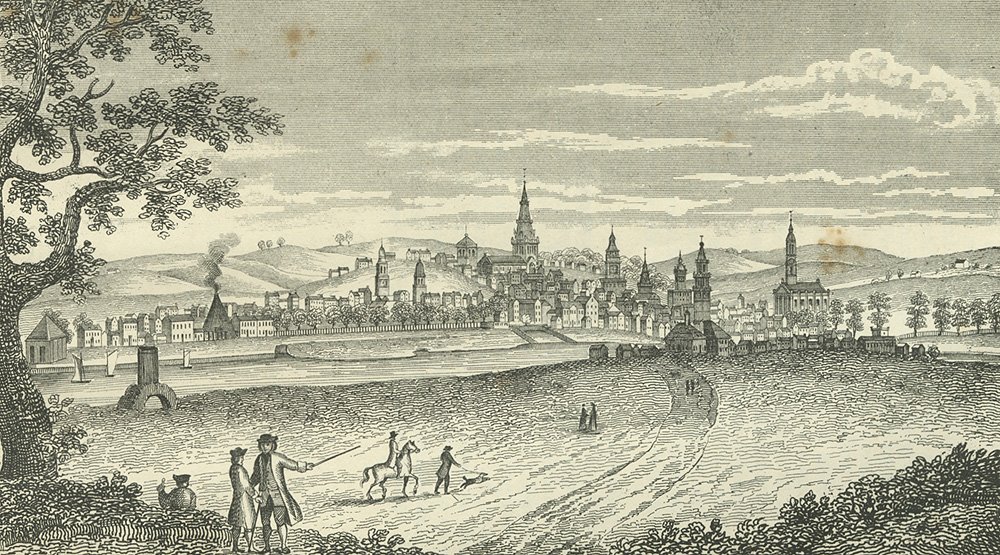
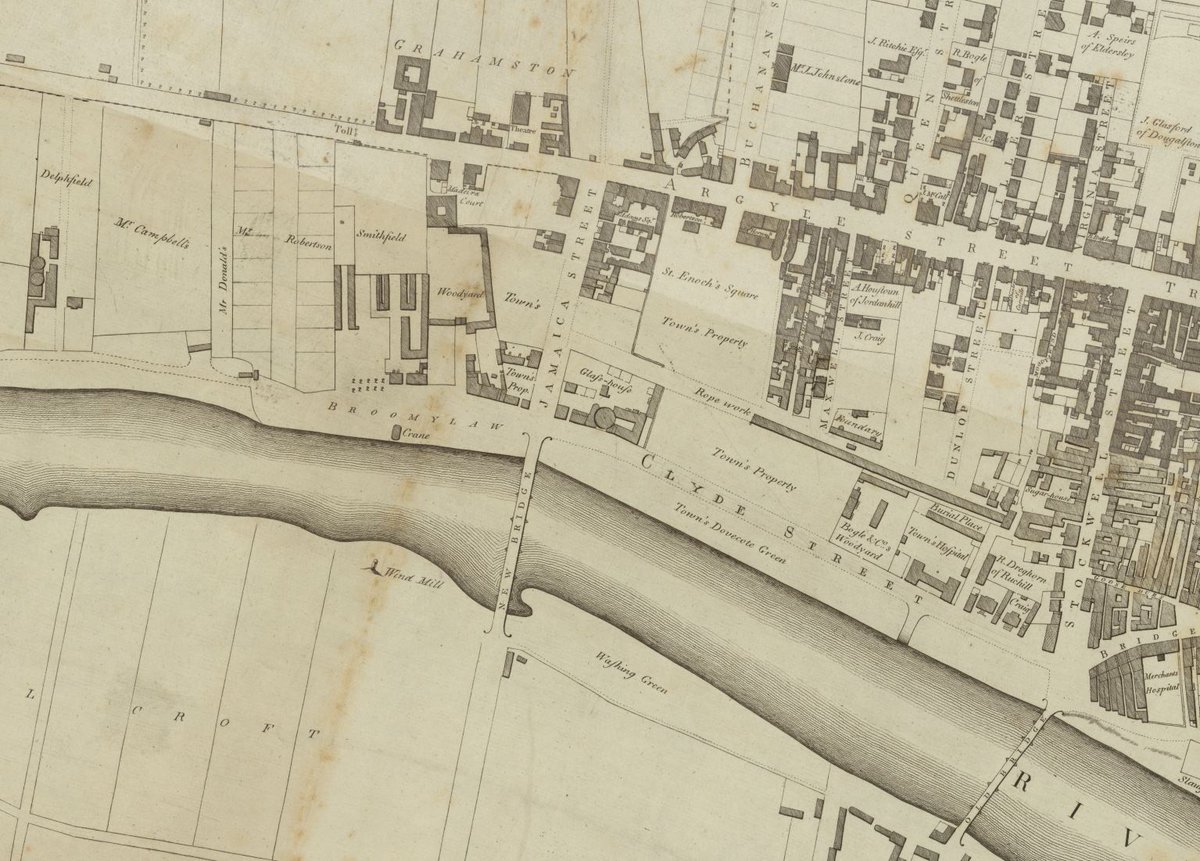
On the far right is the steeple of Allan Dreghorn's Saint Andrew's Parish Church, 1739-56. Originally sited on fields behind the Saltmarket it marked the beginning of a series of developments (like Charlotte St) that would take place on lands formerly part of the Green 

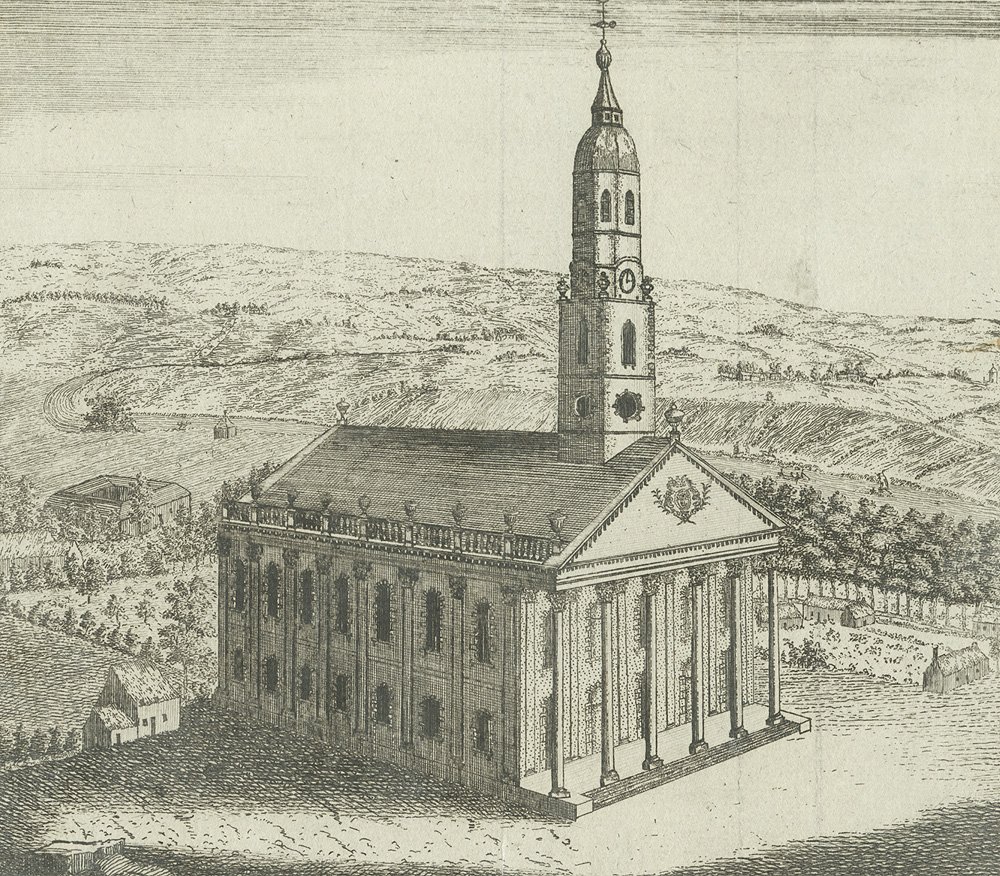
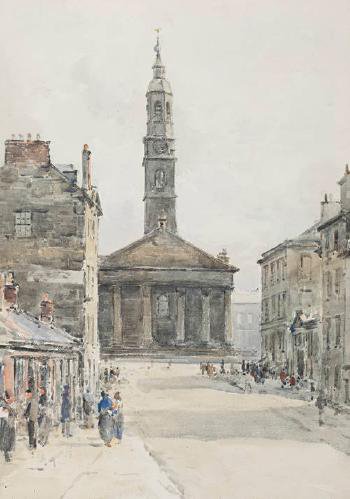
To the left is the spire of David Hamilton's Hutchesons' Hospital, 1805. The original hospital stood on Trongate and was demolished to make way for the Hutcheson St, with the new building situated on Ingram St to frame the vista in typical (for the time) Glasgwegian town planning 

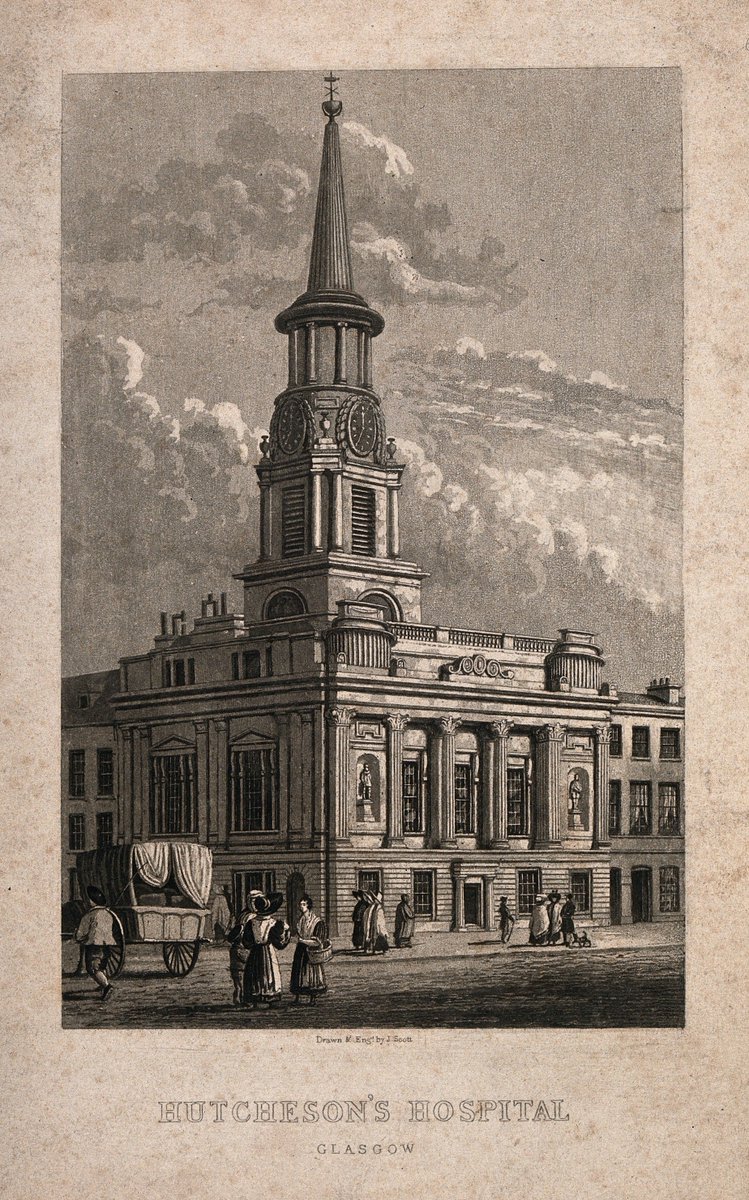
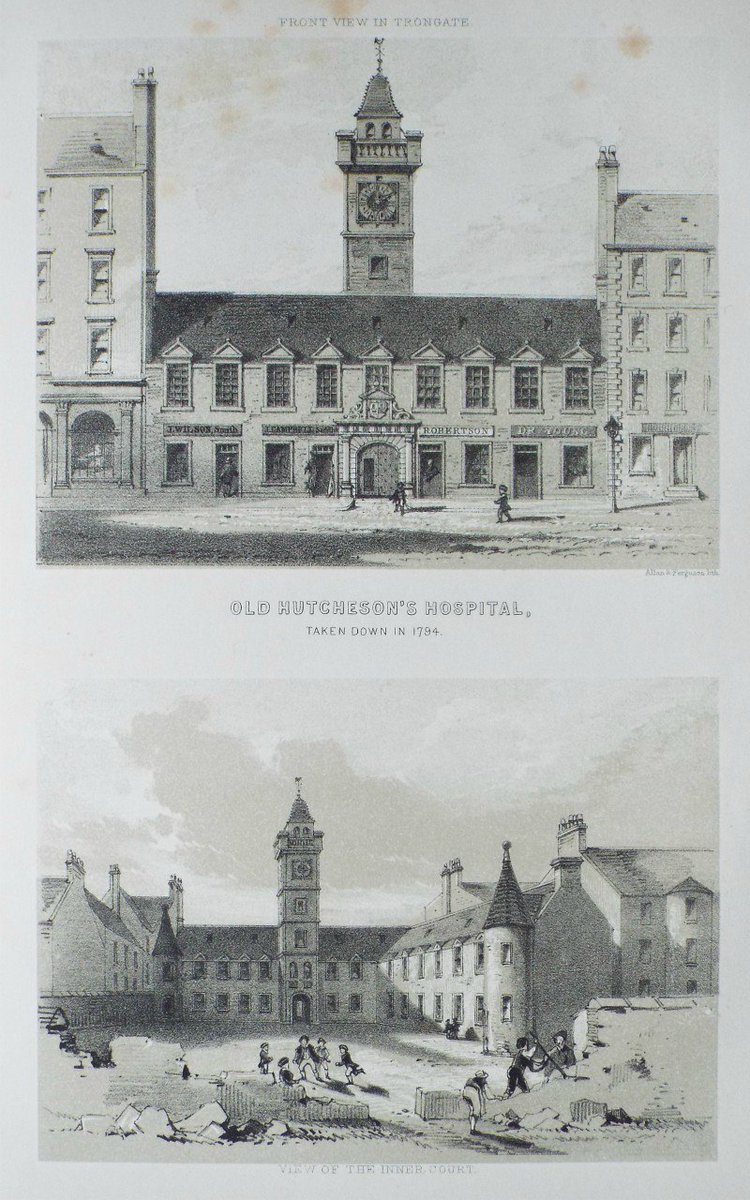
To the left again is William Stark's Saint George's Parish Church, 1807. Its situation Nelson Mandela Place is a bit of a departure from the intended grid that’s depicted quite rigidly (if somewhat conjecturally...) on contemporary maps, although a welcome relief 

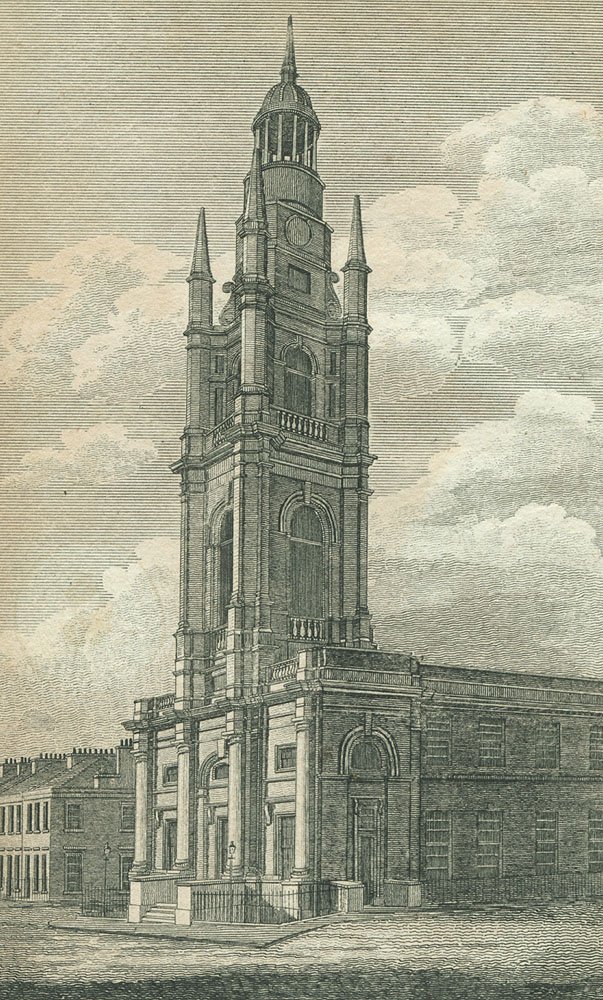

• • •
Missing some Tweet in this thread? You can try to
force a refresh





